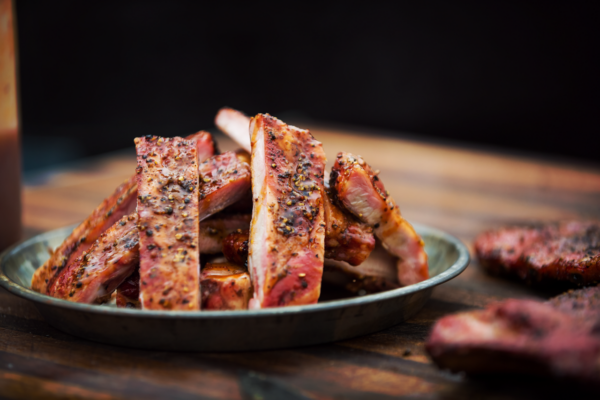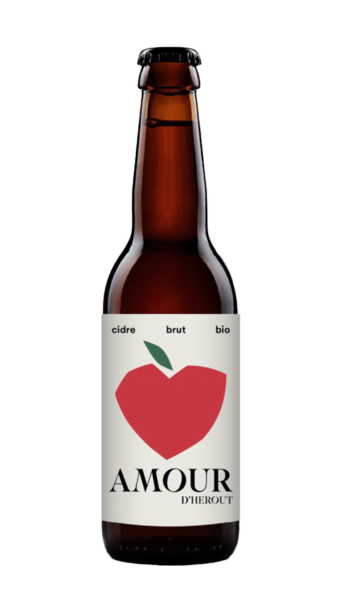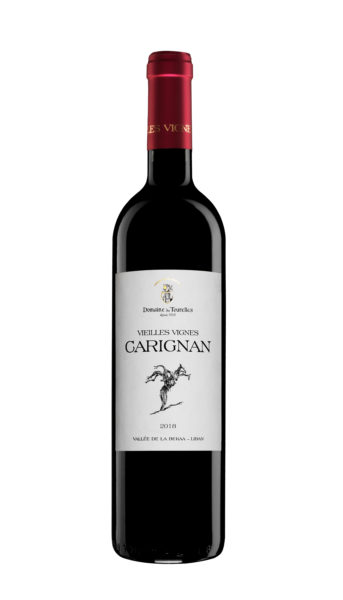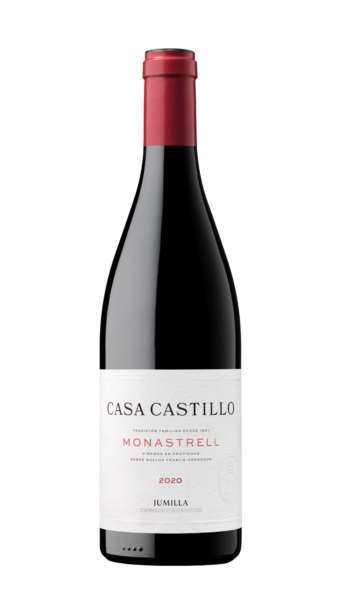


by Steven Spanbauer
Having been raised in Northern Wisconsin, cooking over a fire was just part of daily life, and it wasn’t particularly seasonal either. The only weather that would strictly rule out this cooking method were thunderstorms, blizzards, and temperatures (for my family, at least) below 0ºF. Incidentally, this was the same temperature cut-off that would grant us a ride to school in the morning. But late summer remains the prime outdoor cooking season, whether in a backyard or while camping. So, no matter how you choose to cookout (everybody has an opinion and wants to tell you you’re doing it wrong) and what you decide to cook (it’s about the smoke and flame, and not dietary preferences), here are four selections for your next entirely al fresco, late summer get-together.

A hot day over an even hotter day is thirst work, and while I’ve been known to reach for a beer, I’m also open-minded about my refreshment choices. Not only does Maison Hérout L’Amour quench your thirst, but being made from heirloom bitter-sweet apples organically grown in Normandy, it is dry and refreshing in all its buttered apple splendor before a savory finish that prepares your tastebuds for the meal ahead. Unlike most modern American ciders, L’Amour isn’t just about the fruit, but it captures the whole panoply of orchard aromas. Just make sure you pay attention to the grill while you wonder how such a small bottle could provide so much satisfaction.
Essential info: Marie Agnès Hérout (interview in French) is a founding member of the Cotentin AOP, which enshrines the strictest rules of all the cidre AOPs of France: orchards are farmed as ecosystems so native grasses must be allowed to grow, indigenous fermentations must last at least 6-weeks at minimum, and the cidre can only be bottled after 8-weeks to finish fermentation in bottle. Throughout, nothing can be added or removed.
When to open it: While refreshing while grilling, the savory and slightly tannic finish works well with grilled vegetables, grilled oysters, salmon, and Texas-style Hot Links.

Before it was identified as the same grape variety as Privitivo in Italy and Crljenak Kastelanski, Tribidrag, or Kratosija in the Balkans, Zinfandel was seen as the quintessential American wine and one ideally suited for BBQ. Somehow, after its links to the Adriatic Sea have been revealed, this immigrant grape only seems even more American. Back in the land of its birth, it spawned Vranec, a variety that shares its American cousin’s classic, lively, brambly fruit flavors. So whether you’re contented with just a dry rub or any of the regional variations of BBQ sauce, trust that Tikves Vranec is more than capable of not only standing toe-to-toe with bold flavors, but it will make your efforts over the fire truly shine at the table.
Essential info: Vranec means “strong black,” qualities that are apparent in the color and robust flavors of this variety. While originating in Montenegro, North Macedonia is where the variety has largely earned its reputation in the Balkans. October 5th is World Vranac/Vranec Day, but there is no reason not to start celebrating early.
When to open it: With its bold berry fruit and balancing acidity and tannins, Vranec is ideal with fattier meats like brisket or ribs, sauce, or no sauce. If you want to be really authentic, try it with Kebapi with a Shopska Salad.

There was a time when Carignan was actively being uprooted all across the Mediterranean, either replaced with nothing at all or the fashionable grape-du-jour. Sure, it could make really awful wine, but what grape out there is really without blame if it is carelessly farmed and overcropped? Luckily, the grape police didn’t get to every vine of Carignan, and now it is witnessing a resurgence in small corners of the Mediterranean. Reaching ripeness several degrees lower than many other heat-loving varieties, it maintains a mineral and herbal freshness around a core of dark plum flavors. But in the hands of Faouzi Issa of Domaine des Tourelles in Lebanon, it takes on added exotic rose petal and spice aromas. Its profile makes his Carignan Vieilles Vignes a true chameleon at the table, able to enhance a wide array of flavors and dishes, which makes sense if you’ve ever had the pleasure of enjoying Lebanese food.
Essential info: How did Faouzzi Issa become the most talked about winemaker in the Bekaa? Tim Atkin gets to the bottom of things with Faouzi on Cork Talk.
When to open it: Whenever I open a bottle of this wine, I think about garlicky grilled lamb or simple mixed meat and vegetable kebobs, depending on my ambition. If you’re the sort that likes to challenge yourself, then why not cook a whole lamb over an open fire?

Jose-Maria Vicente should know a thing or two about beating the heat since Jumilla is routinely one of the hottest places in Spain to grow grapes. Just how he manages to bring such finesse and elegance to his wines is why we love them so much. He does have a few secrets, which he is willing to share over grower Champagne and various conservas and snacks before you sit down for lunch – touring his vineyards is thirsty business, after all. First, as the worldwide Master of Monastrell, he has spent his entire career as a winemaker to understand every nuance this variety can express, and then he does his utmost to get out of the way to make sure his grapes speak for themselves. Judicious additions of Garnacha serve to add a light touch of roundness to his entry-level Monastrell. Still, the spice, dark fruit, lovely acidity, and herbal aromas are what every other Monastrell grower wishes they could achieve in their wines. So when you sit down for his magnificent snail and rabbit paella cooked over an open fire, a lightly chilled bottle of this wine truly makes the experience complete.
Essential info: Monastrell, as an indispensable blending variety, goes by several names around the world: Garrut (Tarragona), Mataro (US), and Mourvèdre (France). It adds an herbal, dark-fruit, and leathery edge to its most frequent companion, Grenache, tempering Grenache’s oft-times love-me-now-tendencies. It is renowned as the principal ingredient in Bandol, but even in the South of France, this heat-loving and late-ripening grape struggles to reach its full potential.
When to open it: Paella is our first recommendation, especially one made over an open fire, but this wine’s lively fruit character, especially when lightly chilled, is wonderfully versatile from game and lamb to grilled garden-fresh vegetables with a garlicky yogurt sauce.